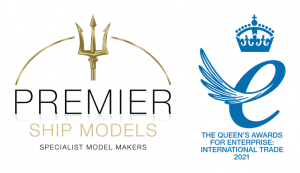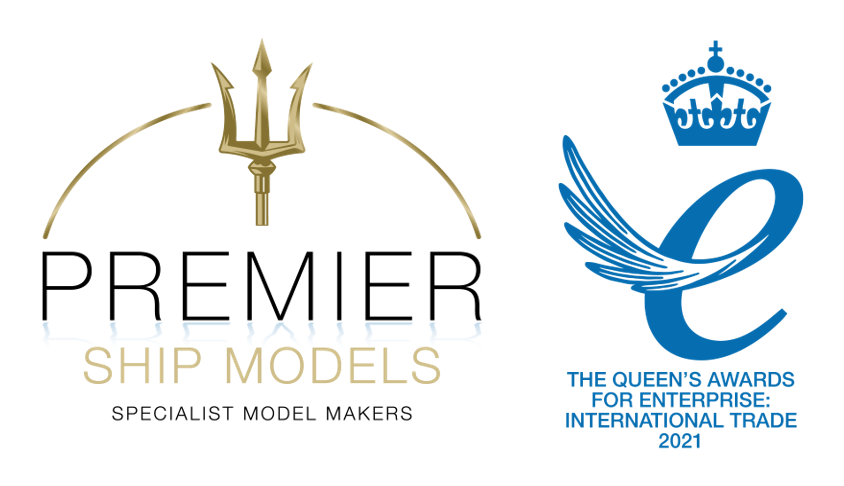In early 2023, Premier Ship Models were tasked with completing two MG1 machine models for Modig Machine Tool, one of the world’s leading high-speed machining and technology companies. The deal was secured by Nathan, our Director and Digital Manager.
More commonly referred to as MODIG, this family-owned company develops, engineers and manufactures quality machines for the most technical projects. They have worked with a multitude of companies across several different industries, such as aerospace, automotive, maritime, energy, construction and even space. Their high-performance centres and extremely advanced processes capture operational excellence via productivity, cost-effectiveness and passion. The word ‘modig’ means brave, in Swedish, which is reflected in their ambition and innovation.
Both models were to be 3D printed, have an exterior and interior, and they each measured 80 centimetres in length. The build time was set at 6 to 7 weeks, together with an airfreight delivery schedule of one week.
3D-printing is an incredibly complex profession. It requires you to understand three main things:
- The material
- The printer
- The methodology of the piece and your desired end result
The entire process is extremely specialist. Our agent in the Far East focuses on two skillsets when constructing models: creating the model in a digital manner and readying it for printing, and the separate skillset to take the parts from the printer and get them to a professionally high-standard.
The models were to mainly focus on the interior workings of the machine, with the exterior being a removable lid. Our agent allowed for a good level of clearance between the inner dimensions of the exterior cover and the interior model of the machinery, mitigating against any potential damage when removing the cover or putting it on again.
Each MG1 machine model was to be in full colour, and also highly-detailed in proportion to said scale model. The materials used included but were not limited to: ABS, Resin, Acrylic, Fibre Glass and Timber.
To construct the model, 3D simulation modelling and subsequent laser-cutting were to be utilised, before then of course 3D printing.
In this instance, both models were without any form of illumination or actual mechanical movement, however, the interior could be moved freely, simply by hand.
The client also wished to have a name plate and their logo, and so this was arranged to be added post-production, once the models were ready.
Each custom project must always start with liaising with the client as closely as possible, and this was no different. This guarantees that we bring their vision to life. We aim to be as transparent as possible, allowing the client to see the progress of their order. This also includes agreeing on things such as delivery time and payment terms.
As previously mentioned, the models were to be 3D printed, and so digital renders needed to be made. The models were constructed with high-precision photosensitive resin, acrylic and timber, and we utilised 3D simulation modelling, together with laser-cutting. The process itself was much the same as it is when we make a model ship.
For the sake of efficiency, production is temporarily paused, so the client can sign-off on the digital renders. Once this is done, production can continue. This is treated with a great deal of urgency, to save time and resources, and streamline efficiency. We obviously cannot continue if the client is displeased with the plan, but this happened without a hitch.
One of the trickiest stages is converting the digital render into a file that is compatible with the 3D-printer, and so certain software has to be used to achieve this. Before this is done, the render itself is split into chunks – which are actual parts of the model (albeit digitalised) – and accordingly named and saved where appropriate. After this, another piece of software is used to ensure the parts are ready to be printed; making sure they’re of the right scale, are sturdy enough and watertight.
When the renders are ready, they can be printed via laser-cutting, and then building can begin. The construction itself is obviously the hands-on section, where specialists are required. It is known as the ‘finishing.’
The models required great precision and patience, as they can sometimes be very delicate in the earlier stages. The predominant colours where white, grey and light blue.
Throughout the entire process, photos and renders were frequently sent to the client to ensure they were happy with the progress, and any feedback was welcomed and subsequently incorporated.
MODIG were incredibly happy with the resulting two MG1 machine models. They were delivered on-time and to a fantastic degree of quality, and it was exciting to journey into a non-maritime sector and expand our horizons. We all look forward to having another opportunity to work in a similar space in the future!
Commission your own model
If you would like to have your own bespoke model built, please complete the contact form below.


